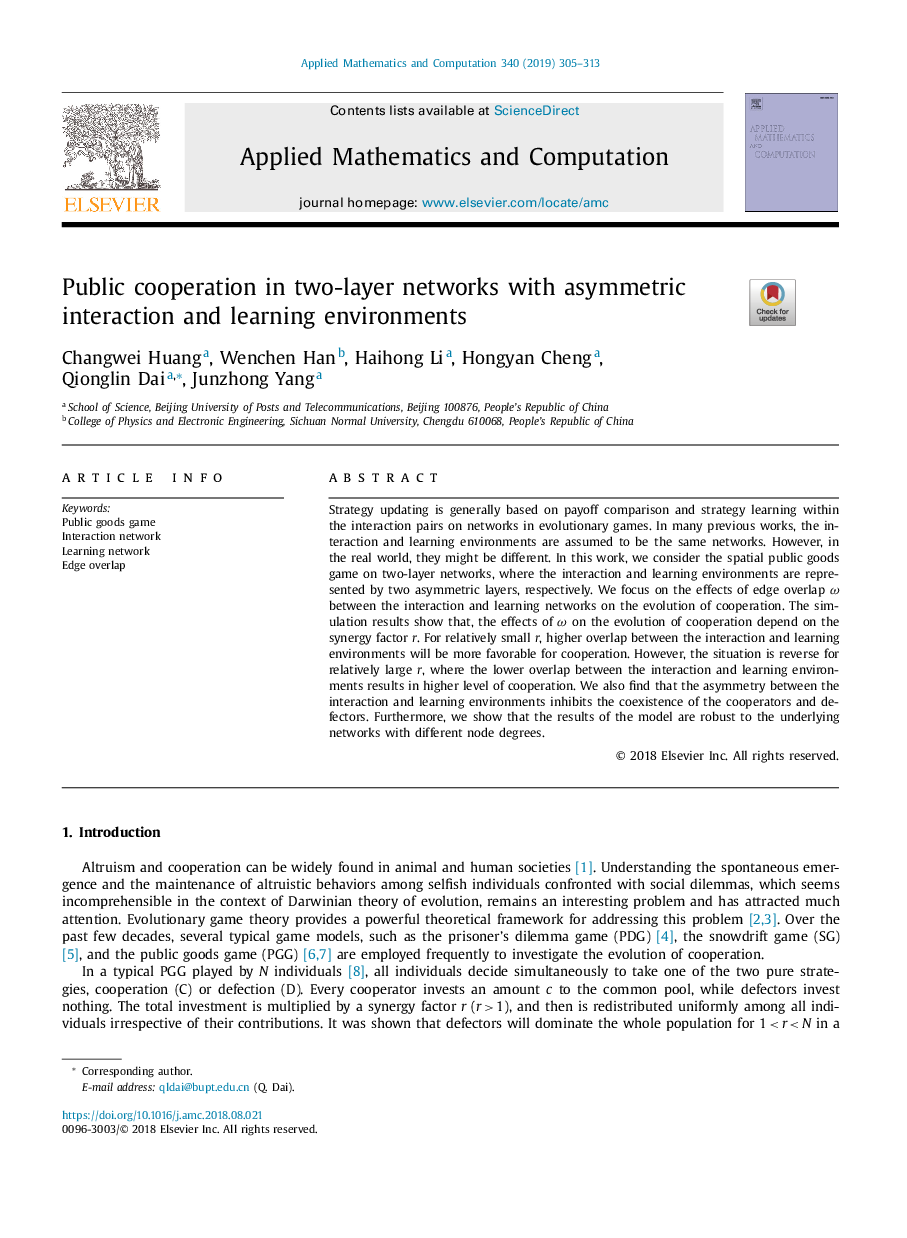| Article ID | Journal | Published Year | Pages | File Type |
|---|---|---|---|---|
| 10149827 | Applied Mathematics and Computation | 2019 | 9 Pages |
Abstract
Strategy updating is generally based on payoff comparison and strategy learning within the interaction pairs on networks in evolutionary games. In many previous works, the interaction and learning environments are assumed to be the same networks. However, in the real world, they might be different. In this work, we consider the spatial public goods game on two-layer networks, where the interaction and learning environments are represented by two asymmetric layers, respectively. We focus on the effects of edge overlap Ï between the interaction and learning networks on the evolution of cooperation. The simulation results show that, the effects of Ï on the evolution of cooperation depend on the synergy factor r. For relatively small r, higher overlap between the interaction and learning environments will be more favorable for cooperation. However, the situation is reverse for relatively large r, where the lower overlap between the interaction and learning environments results in higher level of cooperation. We also find that the asymmetry between the interaction and learning environments inhibits the coexistence of the cooperators and defectors. Furthermore, we show that the results of the model are robust to the underlying networks with different node degrees.
Related Topics
Physical Sciences and Engineering
Mathematics
Applied Mathematics
Authors
Changwei Huang, Wenchen Han, Haihong Li, Hongyan Cheng, Qionglin Dai, Junzhong Yang,
